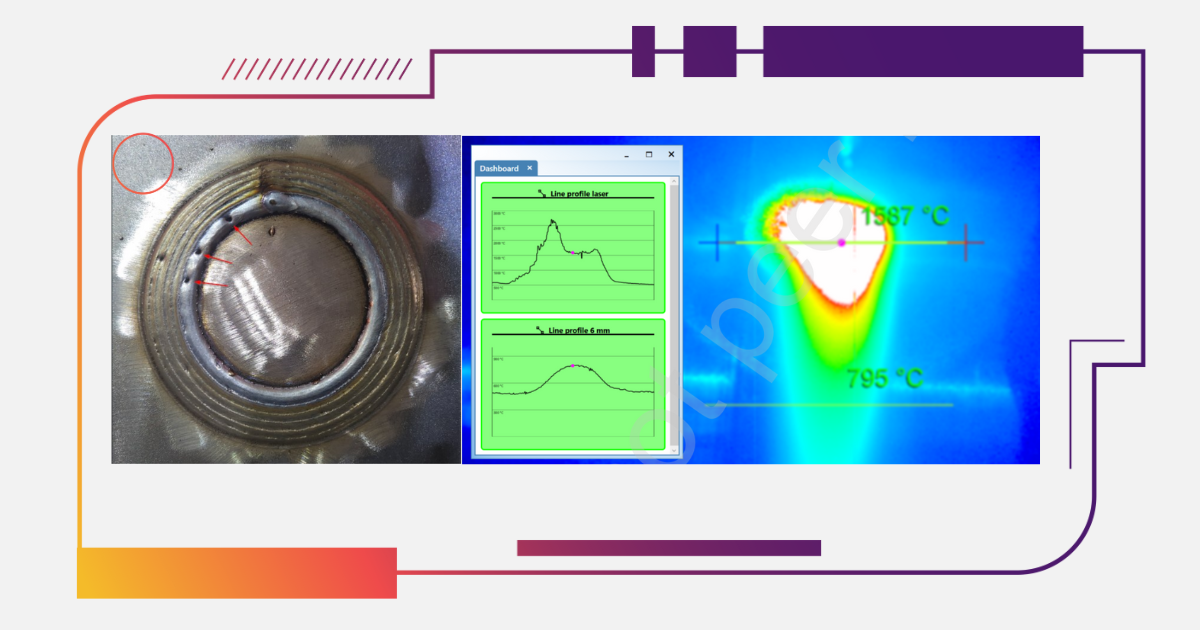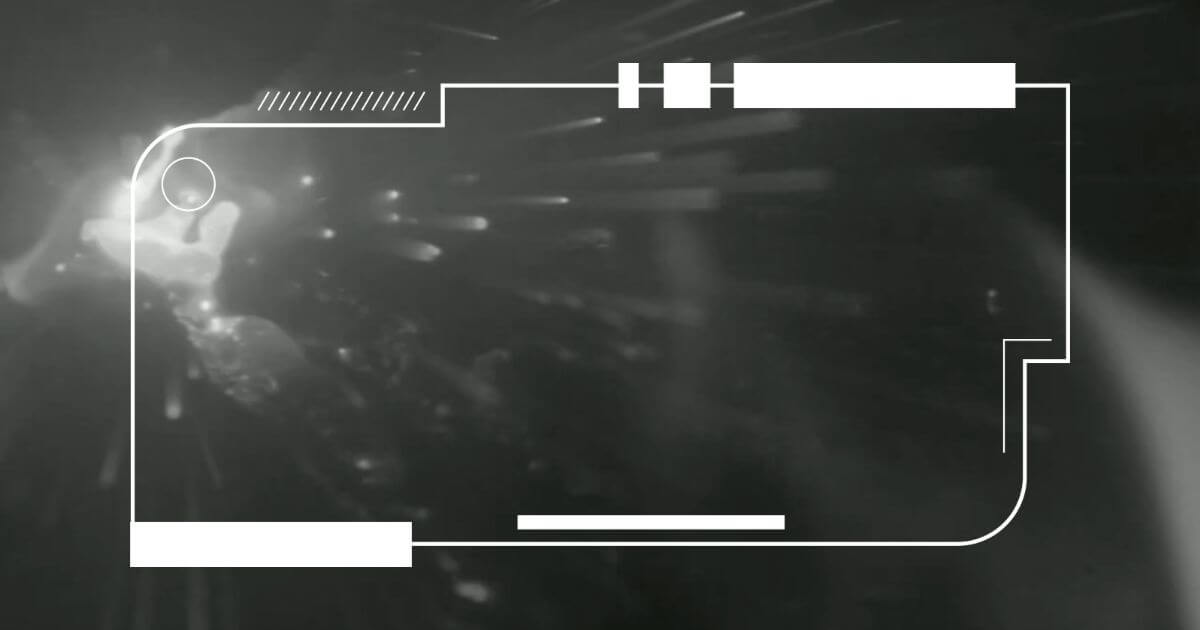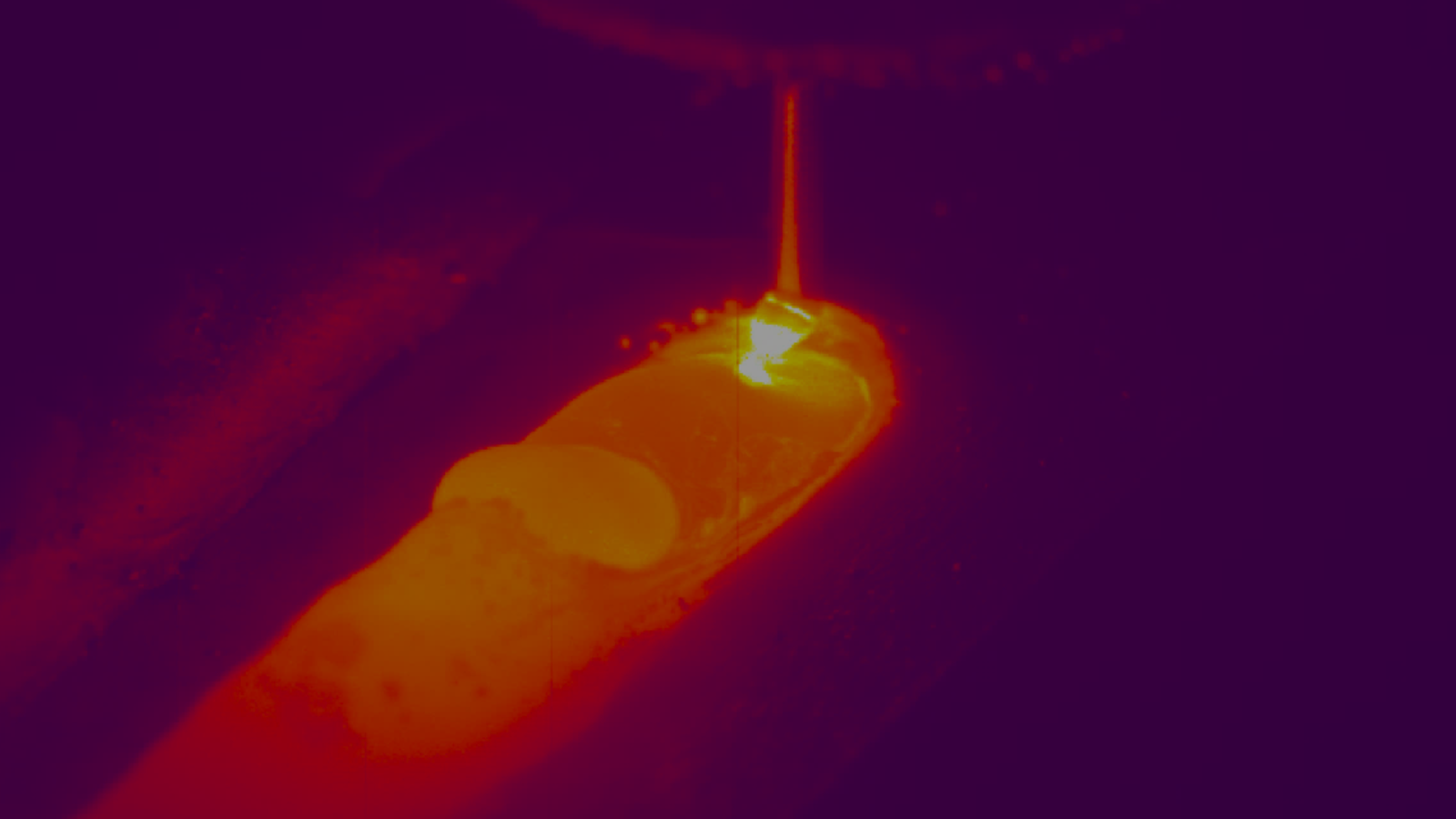In a recent study led by Farzaneh Kaji and colleagues from the University of Waterloo, researchers developed a novel spatter-detection algorithm that brings real-time quality control to Laser-Directed Energy Deposition (LDED) systems. The Xiris XVC-1000 HDR camera was expertly mounted off-axis to capture every molten droplet as it flies.
The Equipment
- Xiris XVC-1000 HDR camera: Mounted off-axis on the LDED head, this monochrome, high-dynamic-range camera records at 60 fps with a close-up field of view (12 × 9 mm²).
- Laser system: A 1 kW fibre-laser LDED setup with fixed scan speed, powder feed, and shielding gas.
The Algorithm
- Contrast Enhancement: Uses CLAHE (Contrast-Limited Adaptive Histogram Equalization) to boost droplet visibility without creating excessive noise.
- Plume Removal: Subtracts a Gaussian-blurred version of each frame to suppress the smoother vapor plume, leaving sharper spatter features.
- Thresholding & Masking: Converts to binary and masks out the main melt pool region, isolating only the ejected droplets.
- Blob Analysis: Identifies connected regions (“blobs”) to count spatters and measure their size, orientation, and distance from the melt pool.
Key Findings
- Detection accuracy: 93.4% average precision when compared to manually labeled frames.
- Laser power correlation: Higher power settings produced more spatters, and those droplets traveled farther from the melt pool.
 Figure 4. Example of image frame: (a) original image after ROI extraction and (b) image after applying CLAHE with 𝐶𝐿=0.5CL=0.5. Source: https://www.mdpi.com/1424-8220/25/12/3610
Figure 4. Example of image frame: (a) original image after ROI extraction and (b) image after applying CLAHE with 𝐶𝐿=0.5CL=0.5. Source: https://www.mdpi.com/1424-8220/25/12/3610
Implications
- By linking spatter metrics to process parameters, operators can adjust laser power or feed rates to reduce unwanted ejecta.
- The approach runs at 60 fps and requires relatively simple computation, making it feasible for near-real-time monitoring on production cells.
Why the Xiris Camera Matters
The Xiris XVC-1000 HDR provides the clean, detailed imagery needed for reliable spatter monitoring:
- High Dynamic Range let’s you see both bright plumes and dark backgrounds without losing detail.
- 60 fps frame rate captures quick-moving droplets without motion blur.
- Close-up view (12 × 9 mm²) resolves individual spatters for accurate counting and measurement.
Together, these features ensure a steady, high-contrast video feed—essential for any real-time detection pipeline.
Who Wins?
Aerospace, automotive, repair—any industry craving consistent, zero-defect metal parts. Integrating the Xiris-powered vision system means fewer scrapped builds, less downtime, and a smoother path to high-precision, lights-out production.
What’s Next
The authors suggest extending this work to multi-layer builds and integrating the vision data into closed-loop control systems. They also note that distinguishing between different spatter types (droplet vs. powder) could further refine process feedback.
Source:
Kaji F., Narayanan J.A., Zimny M., Toyserkani E., “A Novel Spatter Detection Algorithm for Real-Time Quality Control in Laser-Directed Energy Deposition-Based Additive Manufacturing,” Sensors 25(12):3610, published 8 June 2025.
Kaji, F.; Arackal Narayanan, J.; Zimny, M.; Toyserkani, E. A Novel Spatter Detection Algorithm for Real-Time Quality Control in Laser-Directed Energy Deposition-Based Additive Manufacturing. Sensors 2025, 25 (12), 3610. https://doi.org/10.3390/s25123610.
—Farzaneh Kaji (Multi-Scale Additive Manufacturing Laboratory, University of Waterloo), Jinoop Arackal Narayanan (Teesside University), Mark Zimny (Promation), and Ehsan Toyserkani (University of Waterloo). Submitted 17 Mar 2025; revised 1 Jun 2025; accepted 3 Jun 2025; published 8 Jun 2025.




.png)


